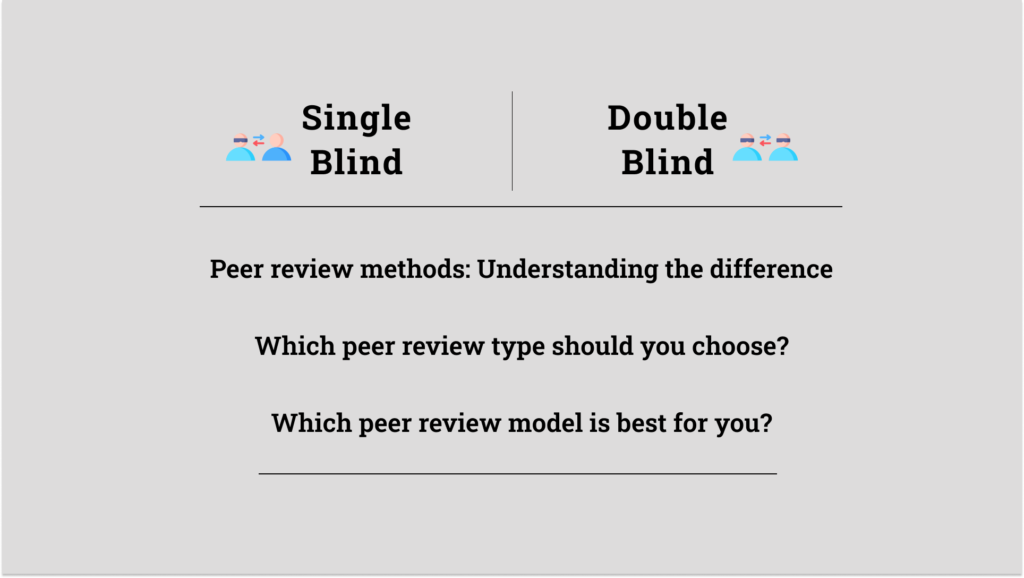Peer Review Types: Single vs. Double-Blind
Reading time - 3 to 5 minutes
Introduction
Peer review is an essential part of the academic publishing process, ensuring that research is rigorous, credible, and valuable to the scientific community. However, there are different types of peer review systems in place, with single-blind and double-blind being two of the
most commonly used. Understanding these systems and how they impact both authors and reviewers is crucial for deciding where to submit your research. This article breaks down the differences between single-blind and double-blind peer review, helping you make informed decisions about your publication process.
1. What is Single-Blind Peer Review?
In a single-blind peer review system, the reviewers know the identity of the author, but the author does not know the identity of the reviewers. This is the most commonly used model, where the focus is on assessing the quality and validity of the research without the author being privy to the reviewers’ backgrounds or potential biases.
Actionable Insight:
If you are submitting to a journal that uses single-blind peer review, be aware that the reviewers might have biases based on your institutional affiliation or past work. Ensure that your research is clear, concise, and free from any potential ambiguities that could lead to biased reviews. Also, be prepared to receive feedback that could be influenced by these factors.
2. What is Double-Blind Peer Review?
In a double-blind peer review system, both the author and the reviewers are kept anonymous from each other. This system is designed to eliminate any potential biases related to the identity of the author or reviewer, such as gender, institutional affiliation, or reputation.
Actionable Insight:
When submitting your paper to a double-blind journal, take extra care to remove any identifying information that could potentially give away your identity. This includes references to your own previous work, personal acknowledgments, or any other indirect clues that may make your identity evident to the reviewer. A double-blind system is designed to ensure an unbiased evaluation, but it’s crucial that you do your part to maintain anonymity.
3. Which Peer Review Type Should You Choose?
The choice between single-blind and double-blind peer review depends on your priorities as an author. Here’s a quick guide:
- Choose
Single-Blind if:
- You value reviewer transparency and know that your work will stand up to
scrutiny. - You’re submitting to a high-impact journal where reviewers are familiar with
your work.
- You value reviewer transparency and know that your work will stand up to
- Choose
Double-Blind if:
- You want to minimize bias related to your identity or institution.
- You’re submitting to a journal where you believe anonymity will encourage a
fairer, more objective evaluation.
Actionable Tip:
Research the journal’s peer review policies before submission. If possible, choose a journal that aligns with your goals and values. Some journals offer both models, allowing you to select the type of review you prefer.
Conclusion: Which Peer Review Model Is Best for You?
Both single-blind and double-blind peer review have their advantages and drawbacks. Understanding how these systems work and how they might impact your research can help you make an informed decision about where to submit your work. Ultimately, the choice is yours, and selecting the right peer review model can significantly influence the feedback you receive and the publication process.
Next Steps for Authors:
- Assess your research goals and determine which peer review model aligns with
them. - Prepare your manuscript accordingly, ensuring that if you’re submitting to a
double-blind journal, all identifying information is removed. - Consider the potential biases and challenges of each model and plan your submission process to mitigate these factors.
